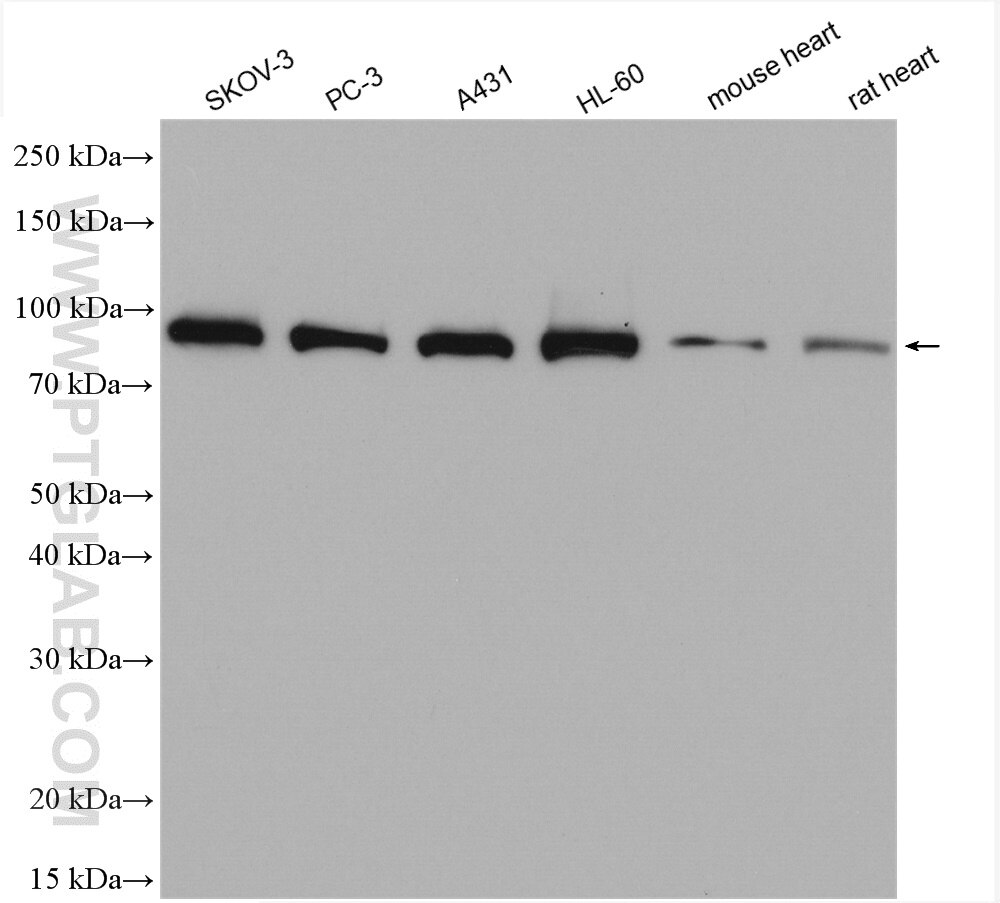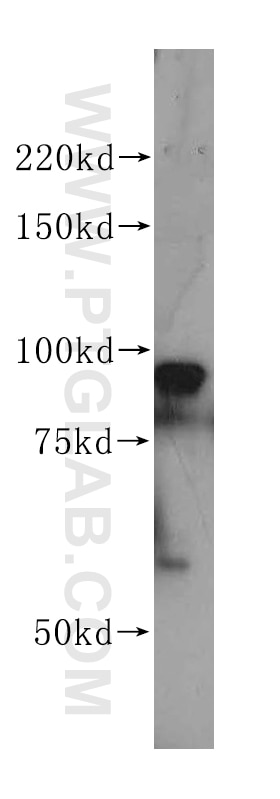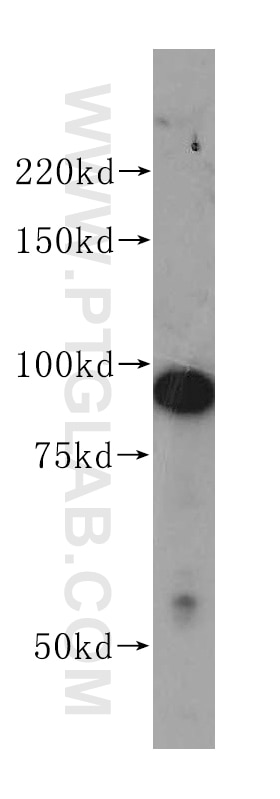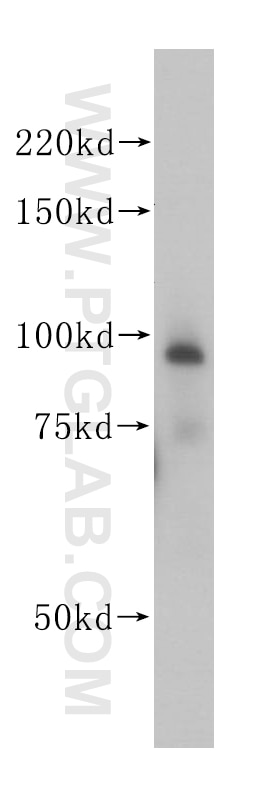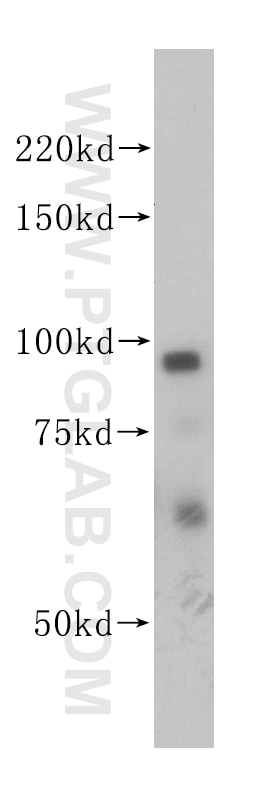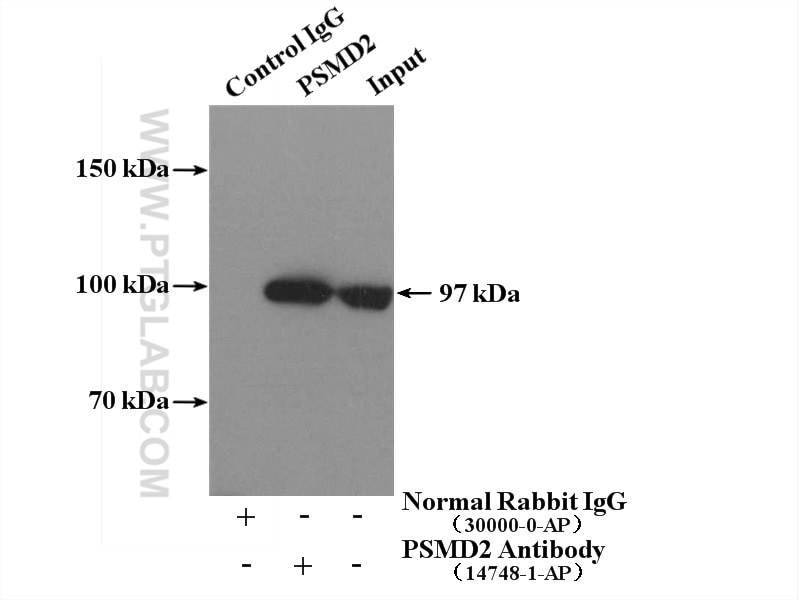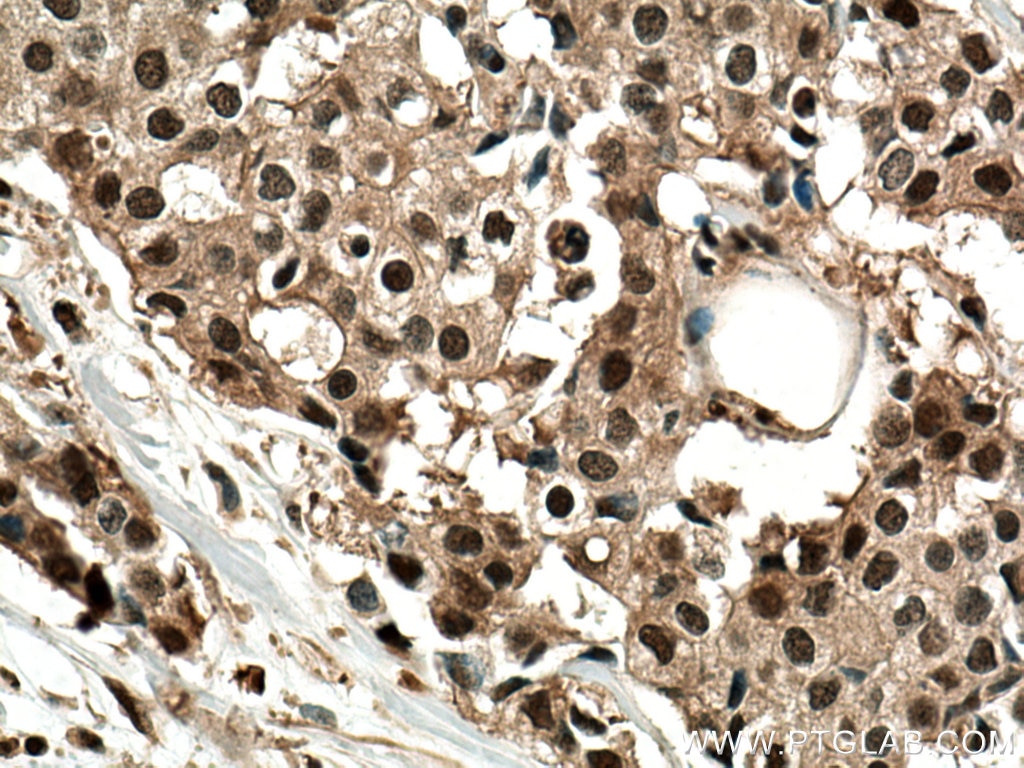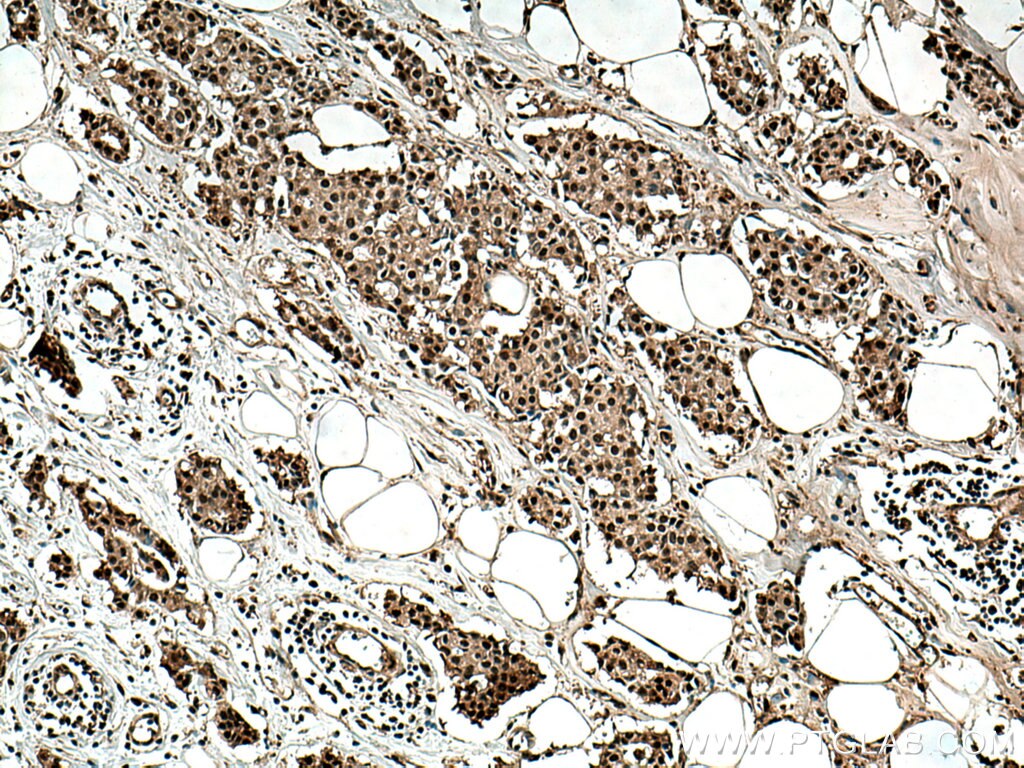Tested Applications
| Positive WB detected in | SKOV-3 cells, HeLa cells, K-562 cells, human heart tissue, mouse skeletal muscle tissue, PC-3 cells, A431 cells, HL-60 cells, mouse heart tissue, rat heart tissue |
| Positive IP detected in | K-562 cells |
| Positive IHC detected in | human breast cancer tissue Note: suggested antigen retrieval with TE buffer pH 9.0; (*) Alternatively, antigen retrieval may be performed with citrate buffer pH 6.0 |
Recommended dilution
| Application | Dilution |
|---|---|
| Western Blot (WB) | WB : 1:1000-1:4000 |
| Immunoprecipitation (IP) | IP : 0.5-4.0 ug for 1.0-3.0 mg of total protein lysate |
| Immunohistochemistry (IHC) | IHC : 1:50-1:500 |
| It is recommended that this reagent should be titrated in each testing system to obtain optimal results. | |
| Sample-dependent, Check data in validation data gallery. | |
Published Applications
| KD/KO | See 3 publications below |
| WB | See 15 publications below |
| IHC | See 3 publications below |
| IF | See 3 publications below |
| IP | See 1 publications below |
| CoIP | See 3 publications below |
Product Information
14748-1-AP targets PSMD2 in WB, IHC, IF, IP, CoIP, ELISA applications and shows reactivity with human, mouse, rat samples.
| Tested Reactivity | human, mouse, rat |
| Cited Reactivity | human, mouse, pig |
| Host / Isotype | Rabbit / IgG |
| Class | Polyclonal |
| Type | Antibody |
| Immunogen |
CatNo: Ag6484 Product name: Recombinant human PSMD2 protein Source: e coli.-derived, PGEX-4T Tag: GST Domain: 561-908 aa of BC002368 Sequence: GLGLNHLGKGEAIEAILAALEVVSEPFRSFANTLVDVCAYAGSGNVLKVQQLLHICSEHFDSKEKEEDKDKKEKKDKDKKEAPADMGAHQGVAVLGIALIAMGEEIGAEMALRTFGHLLRYGEPTLRRAVPLALALISVSNPRLNILDTLSKFSHDADPEVSYNSIFAMGMVGSGTNNARLAAMLRQLAQYHAKDPNNLFMVRLAQGLTHLGKGTLTLCPYHSDRQLMSQVAVAGLLTVLVSFLDVRNIILGKSHYVLYGLVAAMQPRMLVTFDEELRPLPVSVRVGQAVDVVGQAGKPKTITGFQTHTTPVLLAHGERAELATEEFLPVTPILEGFVILRKNPNYDL Predict reactive species |
| Full Name | proteasome (prosome, macropain) 26S subunit, non-ATPase, 2 |
| Calculated Molecular Weight | 100 kDa |
| Observed Molecular Weight | 100 kDa |
| GenBank Accession Number | BC002368 |
| Gene Symbol | PSMD2 |
| Gene ID (NCBI) | 5708 |
| RRID | AB_2170472 |
| Conjugate | Unconjugated |
| Form | Liquid |
| Purification Method | Antigen affinity purification |
| UNIPROT ID | Q13200 |
| Storage Buffer | PBS with 0.02% sodium azide and 50% glycerol, pH 7.3. |
| Storage Conditions | Store at -20°C. Stable for one year after shipment. Aliquoting is unnecessary for -20oC storage. 20ul sizes contain 0.1% BSA. |
Background Information
Tumor necrosis factor type 1 receptor-associated protein 2 (TRAP2), encoded by PSMD2 gene, is a non-ATPase regulatory subunit of the 26 proteasome which is involved in the ATP-dependent degradation of ubiquitinated proteins. The 26S proteasome is a multicatalytic proteinase complex with a highly ordered structure composed of 2 complexes, a 20S core and a 19S regulator. The 19S regulator is composed of a base, which contains 6 ATPase subunits and 2 non-ATPase subunits, and a lid, which contains up to 10 non-ATPase subunits. TRAP2 may also participate in the TNF signalling pathway since it interacts with the tumor necrosis factor type 1 receptor.
Protocols
| Product Specific Protocols | |
|---|---|
| IHC protocol for PSMD2 antibody 14748-1-AP | Download protocol |
| IP protocol for PSMD2 antibody 14748-1-AP | Download protocol |
| WB protocol for PSMD2 antibody 14748-1-AP | Download protocol |
| Standard Protocols | |
|---|---|
| Click here to view our Standard Protocols |
Publications
| Species | Application | Title |
|---|---|---|
Pharmacol Res Curcumin modulates β-catenin stabilization via targeting proteasomal deubiquitinating enzyme USP14 | ||
Oncogene The degradation of p53 and its major E3 ligase Mdm2 is differentially dependent on the proteasomal ubiquitin receptor S5a. | ||
Cell Commun Signal NQO1 potentiates apoptosis evasion and upregulates XIAP via inhibiting proteasome-mediated degradation SIRT6 in hepatocellular carcinoma. | ||
J Virol The S273R protein of African swine fever virus antagonizes the canonical NF-κB signaling pathway by IκBα |

